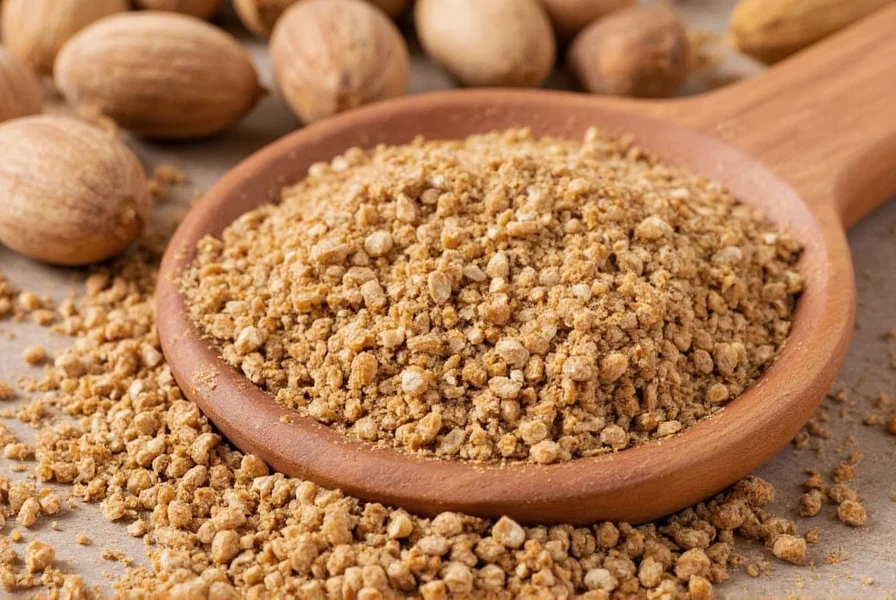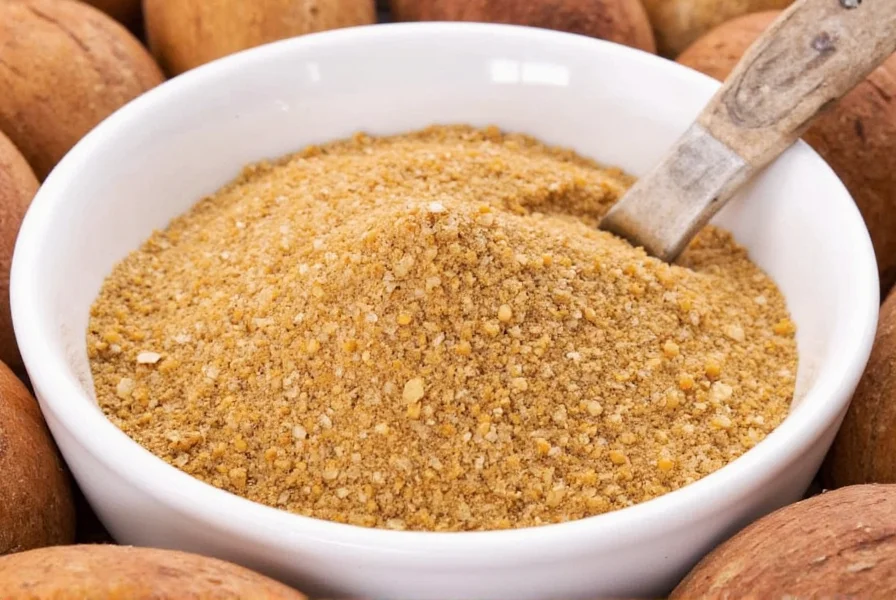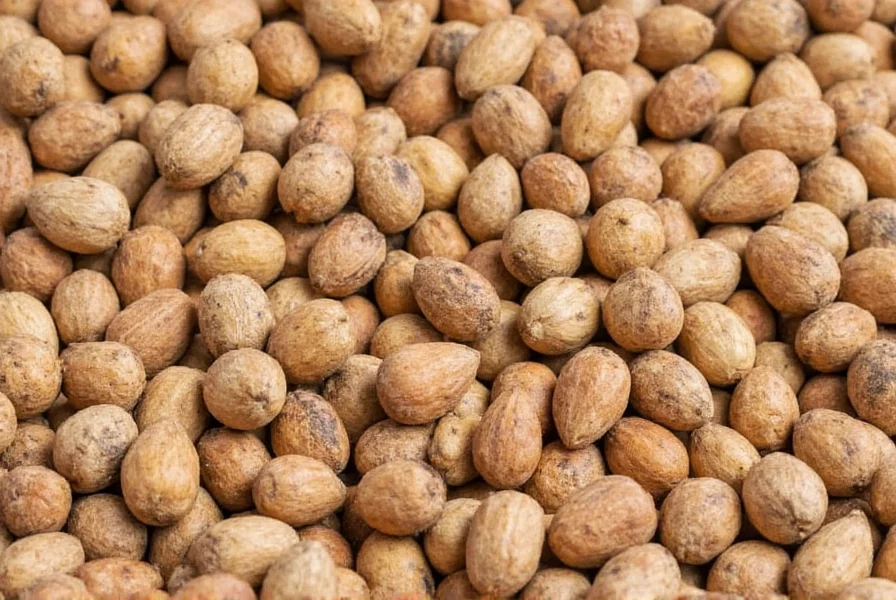Understanding the nuances between ground nutmeg and its whole counterpart is essential for home cooks and professional chefs alike. This versatile spice has been prized in global cuisines for centuries, valued for both its distinctive flavor profile and potential health properties. When evaluating ground nutmeg for your kitchen, several factors deserve consideration beyond basic convenience.
The Science Behind Ground Nutmeg Flavor Degradation
Nutmeg's complex flavor comes from volatile essential oils, primarily myristicin and elemicin. When nutmeg is ground, the increased surface area exposes these compounds to oxygen and light, accelerating oxidation. Studies show that ground nutmeg can lose up to 50% of its aromatic compounds within two weeks of grinding when stored improperly. This chemical degradation explains why freshly grated nutmeg consistently outperforms pre-ground versions in blind taste tests.
| Storage Method | Flavor Retention (3 months) | Optimal Shelf Life |
|---|---|---|
| Air-tight container at room temperature | 30-40% | 6 months |
| Refrigerated in opaque container | 60-70% | 12 months |
| Whole nutmeg stored properly | 90-95% | 2-3 years |
Culinary Applications of Ground Nutmeg
Ground nutmeg works particularly well in recipes where even distribution is crucial. Bakers favor it for spice cakes, pumpkin pies, and gingerbread where uniform flavor matters more than maximum intensity. In creamy sauces and béchamel, ground nutmeg blends seamlessly without visible specks. The best way to use ground nutmeg in cooking involves adding it early in the cooking process for baked goods, but toward the end for delicate sauces to preserve volatile compounds.

Ground Nutmeg vs Whole Nutmeg: Practical Comparison
When deciding between freshly grated nutmeg and pre-ground versions, consider these practical differences. The difference between ground nutmeg and whole nutmeg extends beyond mere convenience. Whole nutmeg maintains its essential oils longer, providing brighter, more complex flavor when freshly grated. Professional chefs consistently prefer whole nutmeg for finishing dishes, while ground versions work better in mixed applications like spice blends or baked goods.
For those seeking ground nutmeg substitutes, mace (the aril surrounding the nutmeg seed) offers similar flavor with slightly more delicate notes. In emergencies, allspice or pumpkin pie spice can approximate nutmeg's warmth, though none replicate its distinctive profile exactly. Understanding ground nutmeg shelf life is crucial—properly stored in an opaque, air-tight container away from heat sources, it remains usable for 6-12 months, though peak flavor occurs within the first 3 months.
Nutritional Profile and Historical Context
Nutmeg contains several beneficial compounds including myristicin, which has demonstrated antioxidant properties in laboratory studies. Traditional medicine systems have used nutmeg for digestive support and as a sleep aid, though scientific evidence for these applications remains limited. Historically, nutmeg was so valuable during the spice trade era that it was worth its weight in gold, with European powers waging wars to control its production.

Maximizing Flavor in Your Kitchen
To get the most from ground nutmeg, purchase small quantities from stores with high turnover to ensure freshness. Check for a strong, sweet aroma when buying—dull or musty smells indicate aged product. For recipes specifically calling for ground nutmeg, incorporate it during the middle stage of cooking to balance flavor development with preservation of volatile compounds. When substituting ground for freshly grated, use approximately 3/4 teaspoon of ground nutmeg for every whole nutmeg called for in a recipe.
Common Usage Mistakes to Avoid
Many home cooks make critical errors when using ground nutmeg. Overuse is common—this potent spice quickly becomes bitter when used excessively. Always start with small amounts (1/8 teaspoon increments) and adjust to taste. Another frequent mistake involves storing ground nutmeg near heat sources like stoves, which accelerates flavor degradation. The best way to store ground nutmeg involves keeping it in a cool, dark place in an opaque container with minimal air exposure.
Does ground nutmeg go bad?
Ground nutmeg doesn't technically spoil but loses flavor potency over time. Properly stored in an air-tight container away from light and heat, it maintains acceptable quality for 6-12 months. After this period, it becomes increasingly flavorless though still safe to consume. The best indicator of freshness is aroma—fresh ground nutmeg should have a strong, sweet, spicy scent.
Can I substitute ground nutmeg for whole nutmeg in recipes?
Yes, but with adjustments. Use 3/4 teaspoon of ground nutmeg for every whole nutmeg called for in a recipe. Remember that freshly grated nutmeg has more intense flavor, so you'll need slightly more ground version to achieve similar results. For finishing dishes, whole nutmeg generally provides superior flavor complexity compared to pre-ground.
What's the difference in flavor between ground and freshly grated nutmeg?
Freshly grated nutmeg offers brighter, more complex flavor with pronounced citrus and pine notes that diminish in pre-ground versions. Ground nutmeg tends to have a flatter, one-dimensional profile due to oxidation of volatile compounds. Professional taste tests consistently show freshly grated nutmeg as having 30-50% greater flavor intensity than even high-quality pre-ground versions stored for several months.
Is ground nutmeg safe to consume in large quantities?
No. Nutmeg contains myristicin, which can cause nutmeg poisoning at high doses (typically 5+ teaspoons). Symptoms include dizziness, nausea, and hallucinations. Culinary use (1/4-1/2 teaspoon per dish) is perfectly safe, but consuming large amounts of ground nutmeg as a recreational substance can lead to serious health complications lasting up to 48 hours.











 浙公网安备
33010002000092号
浙公网安备
33010002000092号 浙B2-20120091-4
浙B2-20120091-4